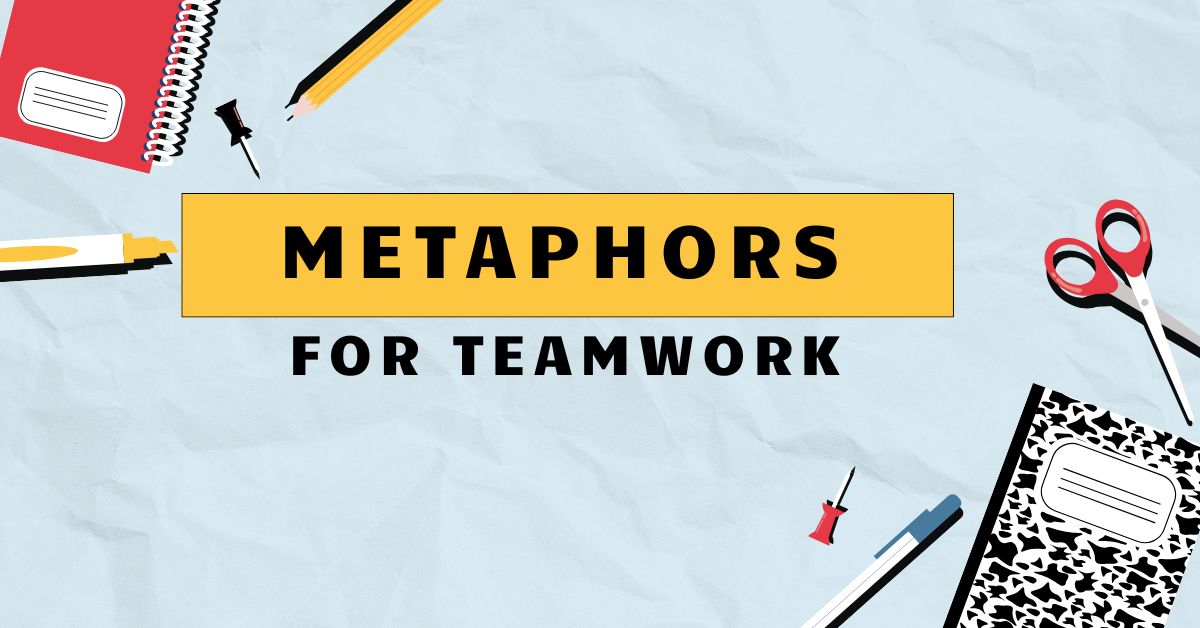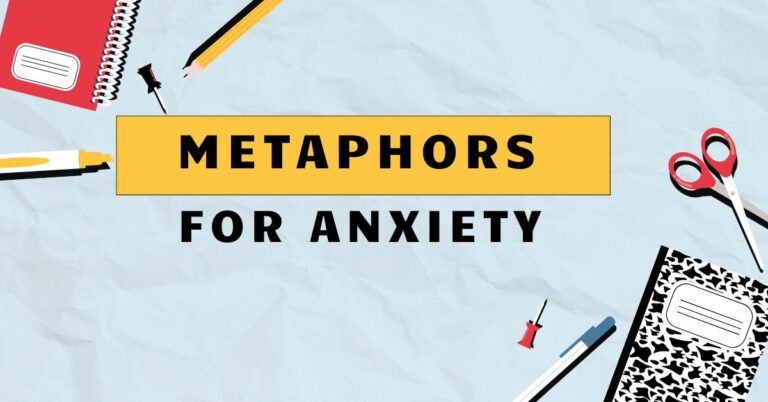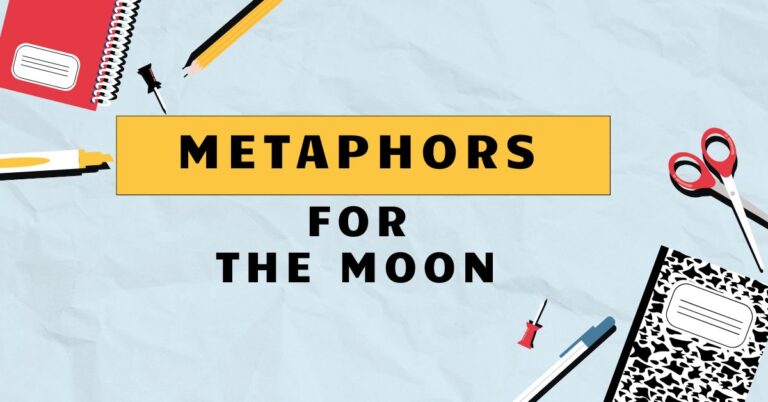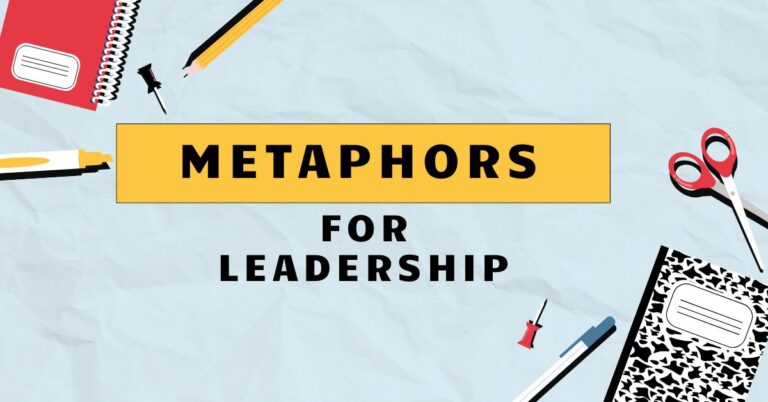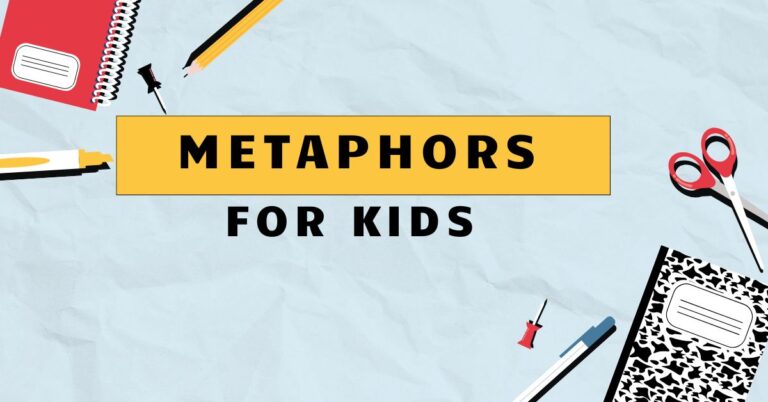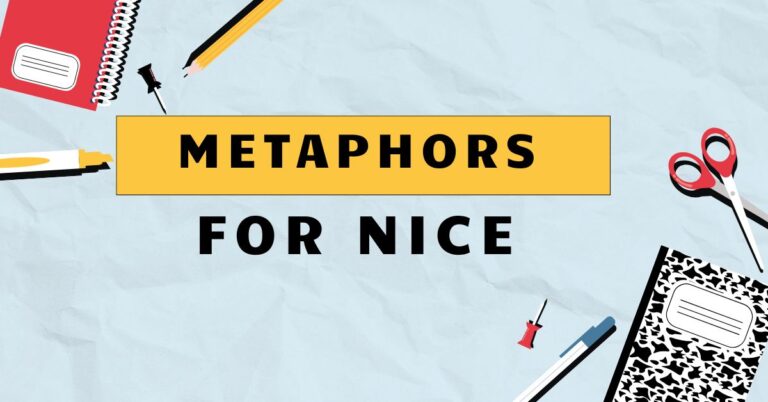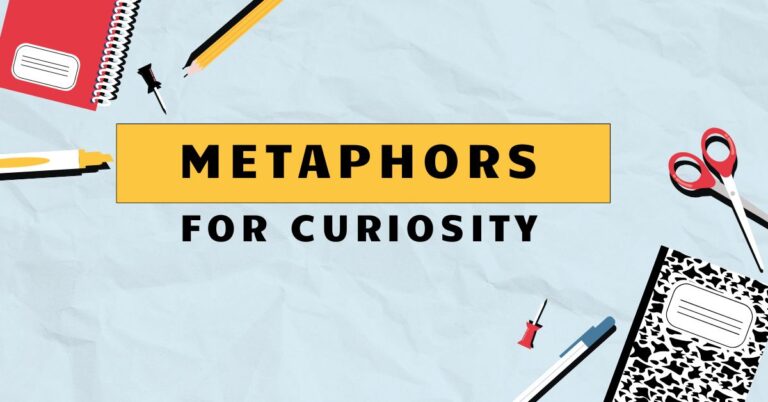41 Metaphors for Teamwork: Understanding Collaborative Language
Teamwork is a fundamental aspect of human interaction, crucial in workplaces, sports, and even personal relationships. Understanding how we talk about teamwork can significantly impact how we perceive and participate in it.
This article explores the rich landscape of metaphors used to describe teamwork, revealing how these figures of speech shape our understanding of collaboration. By analyzing various metaphors, we can gain insights into the dynamics of successful teams and the challenges they face.
This guide is beneficial for English language learners, team leaders, and anyone interested in improving their communication skills within a team environment.
By delving into the nuances of metaphorical language related to teamwork, we can enhance our ability to communicate effectively, foster stronger team bonds, and navigate the complexities of collaborative projects. From sports analogies to musical ensembles, metaphors provide a powerful lens through which to examine the multifaceted nature of teamwork.
This exploration will not only improve your understanding of English grammar but also sharpen your analytical and communication skills.
Table of Contents
- Introduction
- Definition of Metaphor and Teamwork
- Structural Breakdown of Teamwork Metaphors
- Types and Categories of Teamwork Metaphors
- Examples of Teamwork Metaphors
- Usage Rules for Teamwork Metaphors
- Common Mistakes When Using Teamwork Metaphors
- Practice Exercises
- Advanced Topics in Teamwork Metaphors
- FAQ: Frequently Asked Questions
- Conclusion
Definition of Metaphor and Teamwork
Ametaphoris a figure of speech that directly compares two unrelated things, asserting that one thingisanother, not literally, but for rhetorical effect. It works by transferring qualities or characteristics from one concept to another, creating a vivid and insightful comparison.
The purpose of a metaphor is to enhance understanding and create a stronger image in the reader’s or listener’s mind. Metaphors are essential tools in communication and literature, allowing for complex ideas to be expressed in accessible and engaging ways.
Teamwork, on the other hand, is the collaborative effort of a group to achieve a common goal or complete a task in the most effective and efficient way. It involves individuals working together, contributing their unique skills and perspectives, and supporting each other to overcome challenges.
Effective teamwork requires clear communication, mutual respect, and a shared understanding of the objectives. The essence of teamwork lies in synergy, where the combined effort of the group exceeds the sum of individual contributions.
When we combine these two concepts, using metaphors to describe teamwork, we create powerful and relatable analogies that help us understand the dynamics, challenges, and successes of collaborative efforts. These metaphors can draw parallels between teamwork and various other domains, such as sports, music, or even natural phenomena.
Structural Breakdown of Teamwork Metaphors
The structure of a teamwork metaphor typically involves two key elements: thesource domainand thetarget domain. The source domain is the concept or area from which the metaphor is drawn (e.g., a sports team, an orchestra), while the target domain is the teamwork itself, which is being described and understood through the lens of the source domain.
The metaphor works by mapping characteristics and dynamics from the source domain onto the target domain.
For example, in the metaphor “Our team is a well-oiled machine,” the source domain is a ‘well-oiled machine,’ and the target domain is the ‘team.’ The metaphor suggests that the team operates smoothly, efficiently, and with all parts working in harmony, just like a well-maintained machine. The effectiveness of a teamwork metaphor depends on the clarity and relevance of the connection between the source and target domains.
The structure can also be analyzed in terms oftenorandvehicle. The tenor is the subject of the metaphor (teamwork), and the vehicle is the part of the metaphor that carries the meaning (the machine).
Understanding this structure helps in both interpreting and creating effective metaphors for teamwork.
Types and Categories of Teamwork Metaphors
Teamwork metaphors can be categorized based on the source domain from which they are derived. Here are some common categories:
Sports Metaphors
Sports metaphors are frequently used to describe teamwork because they emphasize competition, strategy, and the importance of individual roles within a cohesive unit. These metaphors often highlight the need for coordination, practice, and a shared goal.
Examples include: “Our team is a well-oiled machine,” “We need to step up our game,” “Let’s huddle and strategize,” and “It’s time to pass the baton.”
Music Metaphors
Music metaphors emphasize harmony, rhythm, and the importance of each individual’s contribution to the overall sound. They highlight the need for synchronization and listening to each other.
Examples include: “Our team is like an orchestra,” “We need to find our rhythm,” “Let’s harmonize our efforts,” and “Each team member plays a crucial note.”
Machine Metaphors
Machine metaphors focus on efficiency, precision, and the interdependence of parts. They emphasize the need for each component to function correctly for the whole system to work effectively.
Examples include: “Our team is a well-oiled machine,” “We need to fine-tune our processes,” “Let’s ensure all the gears are turning smoothly,” and “Each member is a cog in the machine.”
Nature Metaphors
Nature metaphors draw parallels between teamwork and natural processes, emphasizing growth, adaptation, and the interconnectedness of elements. They highlight the importance of nurturing relationships and adapting to changing environments.
Examples include: “Our team is like a forest,” “We need to cultivate our relationships,” “Let’s weather the storm together,” and “Each member is a vital part of the ecosystem.”
Construction Metaphors
Construction metaphors emphasize building, structure, and the importance of a strong foundation. They highlight the need for careful planning, solid execution, and a shared vision.
Examples include: “Our team is building a skyscraper,” “We need to lay a strong foundation,” “Let’s construct a winning strategy,” and “Each member is a brick in the wall.”
Examples of Teamwork Metaphors
The following tables provide extensive examples of teamwork metaphors, categorized by their source domain. Each table includes a wide range of examples to illustrate the diverse ways in which metaphors can be used to describe and understand teamwork.
These examples are designed to help you recognize and analyze metaphors in various contexts, as well as to inspire you to create your own effective metaphors for teamwork.
Table 1: Sports Metaphors for Teamwork
This table presents examples of metaphors that use sports as a source domain to describe teamwork. These metaphors often highlight competition, strategy, and the importance of roles.
| Metaphor | Explanation |
|---|---|
| “Our team is a well-oiled machine.” | Indicates smooth and efficient operation, like a perfectly functioning sports team. |
| “We need to step up our game.” | Implies a need to improve performance and effort, similar to increasing intensity in a game. |
| “Let’s huddle and strategize.” | Suggests a need for team discussion and planning, like a sports team planning their next play. |
| “It’s time to pass the baton.” | Indicates a transition of responsibility, like a relay race where one runner passes the baton to the next. |
| “We need to play as a team.” | Emphasizes the importance of cooperation and coordination, like a sports team working together. |
| “Let’s keep our eye on the ball.” | Suggests focusing on the primary objective, like keeping focus on the ball during a game. |
| “We scored a major win.” | Implies achieving a significant success, similar to scoring in a sports game. |
| “That was a foul play.” | Indicates unfair or unethical behavior, like a foul in a sports game. |
| “We need to tackle this problem.” | Suggests confronting and addressing a challenge head-on, like tackling an opponent in football. |
| “Let’s run with this idea.” | Implies pursuing an idea with enthusiasm and energy, like running with the ball in a game. |
| “We need a game plan.” | Suggests the necessity for a detailed strategy, like a sports team’s plan for winning a game. |
| “He’s a team player.” | Indicates someone who cooperates well with others, like a valuable member of a sports team. |
| “Let’s get in the zone.” | Implies achieving a state of peak performance, like athletes reaching their optimal state during a game. |
| “We need to avoid own goals.” | Suggests avoiding actions that harm the team, like scoring against one’s own team in soccer. |
| “The ball is in our court.” | Indicates that the responsibility to act is now with the team, like having possession in a game. |
| “We need to play defense.” | Suggests protecting against threats or challenges, like defending against an opponent in a game. |
| “Let’s aim for a home run.” | Implies striving for a significant achievement, like hitting a home run in baseball. |
| “We need to stay onside.” | Suggests adhering to the rules and regulations, like staying onside in soccer. |
| “It’s a marathon, not a sprint.” | Indicates that the task requires endurance and patience, like running a marathon. |
| “We’re in the same boat.” | Implies that everyone is facing the same challenges or situation, like being in the same boat during a race. |
| “Time out! Let’s regroup.” | Indicates a need to pause, reassess, and reorganize, like calling a timeout in a sports game. |
| “We are running neck and neck.” | Suggests a close competition, similar to runners in a race who are almost at the same pace. |
| “We need to be strategic players.” | Implies the need to carefully plan moves, like chess players who think several steps ahead. |
Table 2: Music Metaphors for Teamwork
This table contains metaphors that use music as a source domain to describe teamwork. These metaphors emphasize harmony, rhythm, and individual contributions.
| Metaphor | Explanation |
|---|---|
| “Our team is like an orchestra.” | Indicates a harmonious and coordinated group, like an orchestra playing in sync. |
| “We need to find our rhythm.” | Suggests a need to establish a consistent and synchronized pace, like musicians finding their rhythm. |
| “Let’s harmonize our efforts.” | Implies aligning individual contributions for a unified outcome, like voices harmonizing in a song. |
| “Each team member plays a crucial note.” | Highlights the importance of each individual’s role, like each note contributing to a melody. |
| “We need to conduct ourselves professionally.” | Suggests behaving in a disciplined and organized manner, like a conductor leading an orchestra. |
| “Let’s create a symphony of success.” | Implies achieving a grand and harmonious outcome, like a symphony creating a beautiful sound. |
| “We need to tune our instruments.” | Suggests preparing and refining individual skills, like musicians tuning their instruments. |
| “We need to be in tune with each other.” | Emphasizes the importance of understanding and synchronizing with each other, like musicians playing in tune. |
| “Let’s compose a great plan.” | Implies creating a well-structured and harmonious strategy, like composing a piece of music. |
| “We need to amplify our efforts.” | Suggests increasing the impact and reach of our work, like amplifying sound in music. |
| “We need to avoid discord.” | Implies avoiding conflicts and disagreements, like avoiding dissonant notes in music. |
| “Let’s create a harmonious environment.” | Suggests fostering a peaceful and cooperative atmosphere, like creating harmonious music. |
| “We need to find our key.” | Implies discovering the essential element for success, like finding the right key in music. |
| “We need to strike the right chord.” | Suggests finding the right approach or tone, like striking the right chord in music. |
| “Let’s modulate our strategies.” | Implies adapting and adjusting our approaches, like modulating keys in music. |
| “We need to be in sync.” | Emphasizes the importance of synchronization and coordination, like musicians playing in sync. |
| “Let’s create a crescendo of achievements.” | Implies building up to a peak of success, like a crescendo in music. |
| “We need to avoid flat notes.” | Suggests avoiding underperformance or errors, like avoiding flat notes in music. |
| “Let’s create a melody of success.” | Implies achieving a fluent and harmonious outcome, like creating a melody in music. |
| “We need to follow the same score.” | Suggests adhering to the same plan or guidelines, like musicians following the same musical score. |
| “Let’s make sweet music together.” | Implies working harmoniously and productively, like making beautiful music together. |
| “We need to avoid cacophony.” | Suggests preventing a chaotic and unpleasant situation, like avoiding cacophony in music. |
| “Let’s keep the tempo steady.” | Implies maintaining a consistent pace, like keeping a steady tempo in music. |
Table 3: Machine Metaphors for Teamwork
This table presents metaphors that use machines as a source domain to describe teamwork. These metaphors emphasize efficiency, precision, and interdependence.
| Metaphor | Explanation |
|---|---|
| “Our team is a well-oiled machine.” | Indicates smooth and efficient operation, like a perfectly functioning machine. |
| “We need to fine-tune our processes.” | Suggests making small adjustments to improve efficiency, like fine-tuning a machine. |
| “Let’s ensure all the gears are turning smoothly.” | Implies ensuring all components are working in harmony, like gears in a machine. |
| “Each member is a cog in the machine.” | Highlights the importance of each individual’s role, like each cog contributing to the machine’s function. |
| “We need to streamline our workflow.” | Suggests simplifying and optimizing processes, like streamlining a production line. |
| “Let’s synchronize our efforts.” | Implies coordinating actions for maximum efficiency, like synchronizing machines in a factory. |
| “We need to lubricate the process.” | Suggests easing friction and facilitating smoother operation, like lubricating a machine. |
| “Let’s tighten the bolts.” | Implies reinforcing and strengthening the team’s structure, like tightening bolts in a machine. |
| “We need to recalibrate our strategies.” | Suggests adjusting and realigning plans, like recalibrating a machine. |
| “Let’s avoid system failure.” | Implies preventing a complete breakdown, like avoiding failure in a machine. |
| “We need to be well-engineered.” | Suggests being carefully designed and structured, like a well-engineered machine. |
| “Let’s monitor the gauges.” | Implies tracking progress and performance, like monitoring gauges on a machine. |
| “We need to be a lean machine.” | Suggests being efficient and eliminating waste, like a lean manufacturing process. |
| “Let’s power up the team.” | Implies energizing and motivating the team, like powering up a machine. |
| “We need to avoid bottlenecks.” | Suggests preventing obstructions and delays, like avoiding bottlenecks in a production line. |
| “Let’s optimize our performance.” | Implies maximizing efficiency and output, like optimizing a machine’s performance. |
| “We need to be a well-oiled system.” | Indicates a smoothly functioning and interconnected group, like a well-oiled system. |
| “Let’s automate the process.” | Suggests using technology to streamline tasks, like automating processes in a factory. |
| “We need to be a precision instrument.” | Suggests being accurate and precise in our work, like a precision instrument. |
| “Let’s troubleshoot the issues.” | Implies identifying and resolving problems, like troubleshooting a machine. |
| “We need to be a well-regulated mechanism.” | Suggests being organized and controlled, like a well-regulated mechanism. |
| “Let’s synchronize our movements.” | Implies coordinating actions for maximum efficiency, like synchronizing movements in a machine. |
| “We need to be a powerhouse of productivity.” | Suggests being highly efficient and productive, like a powerhouse generating energy. |
Usage Rules for Teamwork Metaphors
Using teamwork metaphors effectively requires understanding certain usage rules to ensure clarity, relevance, and appropriateness. These rules help avoid confusion and enhance communication.
- Relevance: The metaphor should be relevant to the context of the teamwork being described. Choose metaphors that resonate with the specific challenges, goals, and dynamics of the team. A sports metaphor might be suitable for a competitive sales team, while a music metaphor could be more appropriate for a creative project team.
- Clarity: The metaphor should be easily understood by all members of the team. Avoid obscure or overly complex metaphors that may require extensive explanation. The goal is to enhance understanding, not to confuse or alienate team members.
- Consistency: Maintain consistency in the use of metaphors throughout a discussion or project. Mixing metaphors can create confusion and weaken the impact of the message. If you start with a sports metaphor, stick with it unless there is a clear and logical reason to switch to a different type.
- Appropriateness: The metaphor should be appropriate for the team’s culture and values. Avoid metaphors that could be offensive, insensitive, or exclusionary. Consider the cultural background and individual preferences of team members when choosing a metaphor.
- Context: Always provide sufficient context to ensure that the metaphor is understood correctly. Briefly explain the connection between the source domain and the target domain to avoid misinterpretations. For example, if you say, “We need to huddle and strategize,” explain that you mean the team should come together to plan and coordinate their efforts.
Common Mistakes When Using Teamwork Metaphors
Several common mistakes can undermine the effectiveness of teamwork metaphors. Recognizing and avoiding these errors is essential for clear and impactful communication.
1. Mixed Metaphors: Combining elements from different and unrelated metaphors can create confusion and weaken the message.
| Incorrect | Correct |
|---|---|
| “Let’s grab the bull by the horns and run with it to the finish line.” | “Let’s grab the bull by the horns and tackle this challenge.” (Consistent with the ‘bull’ metaphor) |
| “We need to stay afloat and keep our eye on the ball.” | “We need to stay afloat and navigate these challenges.” (Consistent with the ‘water’ metaphor) |
2. Overused Metaphors: Using the same tired metaphors repeatedly can diminish their impact and make communication sound stale.
| Overused | Fresh Alternative |
|---|---|
| “Our team is a well-oiled machine.” | “Our team is a finely tuned engine.” |
| “We need to think outside the box.” | “We need to explore uncharted territories.” |
3. Inappropriate Metaphors: Choosing metaphors that are insensitive or culturally inappropriate can alienate team members and damage relationships.
| Inappropriate | Appropriate |
|---|---|
| (Using military metaphors in a non-competitive environment) “Let’s launch an attack on this problem.” | “Let’s address this problem proactively.” |
| (Using metaphors that exclude certain team members) “We need to be like a wolf pack.” | “We need to work together cohesively.” |
4. Unclear Metaphors: Using metaphors that are obscure or not easily understood can create confusion and hinder communication.
| Unclear | Clear |
|---|---|
| “We need to be more synergetic.” | “We need to work together more effectively to achieve synergy.” |
| “Let’s leverage our core competencies.” | “Let’s use our strengths to our advantage.” |
Practice Exercises
Test your understanding of teamwork metaphors with these exercises. Identify the type of metaphor used in each sentence and explain its meaning.
Then, rewrite the sentence using a different type of metaphor.
Exercise 1: Identifying and Explaining Metaphors
| Question | Answer |
|---|---|
| 1. “Our team is building a bridge to success.” | Type: Construction Metaphor. Meaning: The team is working together to create a pathway to achieve their goals. |
| 2. “We need to find our rhythm and dance to success.” | Type: Music Metaphor. Meaning: The team needs to synchronize their efforts to achieve a harmonious outcome. |
| 3. “Let’s tackle this problem head-on.” | Type: Sports Metaphor. Meaning: The team should confront and address the challenge directly. |
| 4. “Each member is a vital organ in the team’s body.” | Type: Nature Metaphor. Meaning: Each individual’s contribution is essential for the team to function effectively. |
| 5. “We need to fine-tune our processes for optimal performance.” | Type: Machine Metaphor. Meaning: The team should make small adjustments to improve efficiency. |
| 6. “The team is a growing tree, reaching for the sky.” | Type: Nature Metaphor. Meaning: The team is developing and aspiring to achieve great heights. |
| 7. “Let’s conduct our meeting like an orchestra.” | Type: Music Metaphor. Meaning: The meeting should be organized and harmonious, with each participant contributing effectively. |
| 8. “We need to pass the baton to the next leader.” | Type: Sports Metaphor. Meaning: Responsibility should be transferred smoothly to the next person in charge. |
| 9. “Our team is the foundation upon which success is built.” | Type: Construction Metaphor. Meaning: The team provides the fundamental support for achieving success. |
| 10. “We are a well-oiled engine, ready to drive forward.” | Type: Machine Metaphor. Meaning: The team is efficient and prepared to move towards their goals. |
Exercise 2: Rewriting Metaphors
Rewrite each sentence using a different type of metaphor.
| Original Sentence | Rewritten Sentence (Different Metaphor) |
|---|---|
| 1. “Our team is building a bridge to success.” (Construction) | “Our team is like an orchestra, creating a symphony of success.” (Music) |
| 2. “We need to find our rhythm and dance to success.” (Music) | “We need to tackle this project like a winning team.” (Sports) |
| 3. “Let’s tackle this problem head-on.” (Sports) | “Let’s construct a solid plan to solve this problem.” (Construction) |
| 4. “Each member is a vital organ in the team’s body.” (Nature) | “Each member is a crucial note in our team’s song.” (Music) |
| 5. “We need to fine-tune our processes for optimal performance.” (Machine) | “We need to cultivate our skills for optimal performance.” (Nature) |
| 6. “The team is a growing tree, reaching for the sky.” (Nature) | “The team is building a skyscraper, reaching new heights.” (Construction) |
| 7. “Let’s conduct our meeting like an orchestra.” (Music) | “Let’s engineer our meeting for maximum efficiency.” (Machine) |
| 8. “We need to pass the baton to the next leader.” (Sports) | “We need to ensure the gears turn smoothly when the next leader takes over.” (Machine) |
| 9. “Our team is the foundation upon which success is built.” (Construction) | “Our team is the fertile ground where success grows.” (Nature) |
| 10. “We are a well-oiled engine, ready to drive forward.” (Machine) | “We are a team of athletes, ready to sprint to the finish line.” (Sports) |
Advanced Topics in Teamwork Metaphors
For advanced learners, exploring the nuances of metaphor theory and its application to teamwork can provide deeper insights. This includes understanding the cognitive processes behind metaphor comprehension, the role of culture in shaping metaphorical expressions, and the use of extended metaphors to create compelling narratives about teamwork.
1. Conceptual Metaphor Theory:This theory posits that metaphors are not merely linguistic devices but reflect fundamental cognitive structures.
Understanding how these conceptual metaphors shape our thinking about teamwork can enhance communication and collaboration.
2. Cultural Variations in Metaphors:Different cultures may use different metaphors to describe teamwork, reflecting their unique values and perspectives.
Being aware of these cultural variations can improve cross-cultural communication and collaboration.
3. Extended Metaphors:Creating extended metaphors that develop a central theme throughout a project or discussion can provide a powerful and cohesive framework for understanding teamwork.
This involves elaborating on the initial metaphor and exploring its various implications.
FAQ: Frequently Asked Questions
- What is the difference between a metaphor and a simile?
A metaphor directly equates two things (e.g., “Our team is an orchestra”), while a simile uses “like” or “as” to make a comparison (e.g., “Our team is like an orchestra”). Metaphors are more assertive and can create a stronger image, while similes are more explicit and gentle in their comparison.
- Why are metaphors useful in describing teamwork?
Metaphors provide a relatable and engaging way to understand complex concepts, making it easier for team members to grasp the dynamics of collaboration and their roles within the team. They can also inspire creativity and foster a shared vision.
- How can I choose the right metaphor for my team?
Consider the team’s goals, values, and culture. Choose a metaphor that resonates with the team’s identity and the specific challenges they face. Ensure that the metaphor is clear, relevant, and appropriate for all team members.
- What are some common pitfalls to avoid when using metaphors?
Avoid mixed metaphors, overused metaphors, inappropriate metaphors, and unclear metaphors. Ensure that your metaphors are consistent, relevant, and easily understood by all team members.
- Can metaphors be used in all types of teams?
Yes, metaphors can be used in various types of teams, from sports teams to project teams to creative teams. The key is to choose metaphors that are relevant to the team’s specific context and goals.
- How can I encourage my team to use metaphors effectively?
Lead by example and use metaphors in your own communication. Encourage team members to share their own metaphors and discuss their meanings. Provide feedback and guidance to help them use metaphors effectively.
- Are there any cultural considerations when using metaphors?
Yes, different cultures may interpret metaphors differently. Be mindful of cultural variations and avoid metaphors that could be offensive or insensitive. When working with diverse teams, take the time to understand each member’s cultural background and communication preferences.
- What is the role of context in understanding metaphors?
Context is crucial for understanding metaphors. Always provide sufficient context to ensure that the metaphor is interpreted correctly. Explain the connection between the source domain and the target domain to avoid misinterpretations.
- How do metaphors help in conflict resolution within a team?
Metaphors can help in reframing conflicts and providing a new perspective. By using metaphors to describe the situation, team members can gain a better understanding of each other’s viewpoints and find common ground for resolution.
- Can using metaphors improve team performance?
Yes, when used effectively, metaphors can enhance communication, foster a shared vision, and inspire creativity, ultimately leading to improved team performance. They can help team members understand their roles and responsibilities more clearly and work together more effectively.
Conclusion
Metaphors are powerful tools for understanding and communicating the complexities of teamwork. By drawing parallels between teamwork and other domains, such as sports, music, machines, and nature, metaphors provide a relatable and engaging way to grasp the dynamics of collaboration.
Mastering the art of using teamwork metaphors can significantly enhance communication, foster stronger team bonds, and improve overall team performance.
Remember to choose metaphors that are relevant, clear, consistent, and appropriate for your team’s culture and values. Avoid common mistakes such as mixed metaphors and overused expressions.
By practicing and refining your understanding of teamwork metaphors, you can unlock new levels of communication and collaboration within your team.

